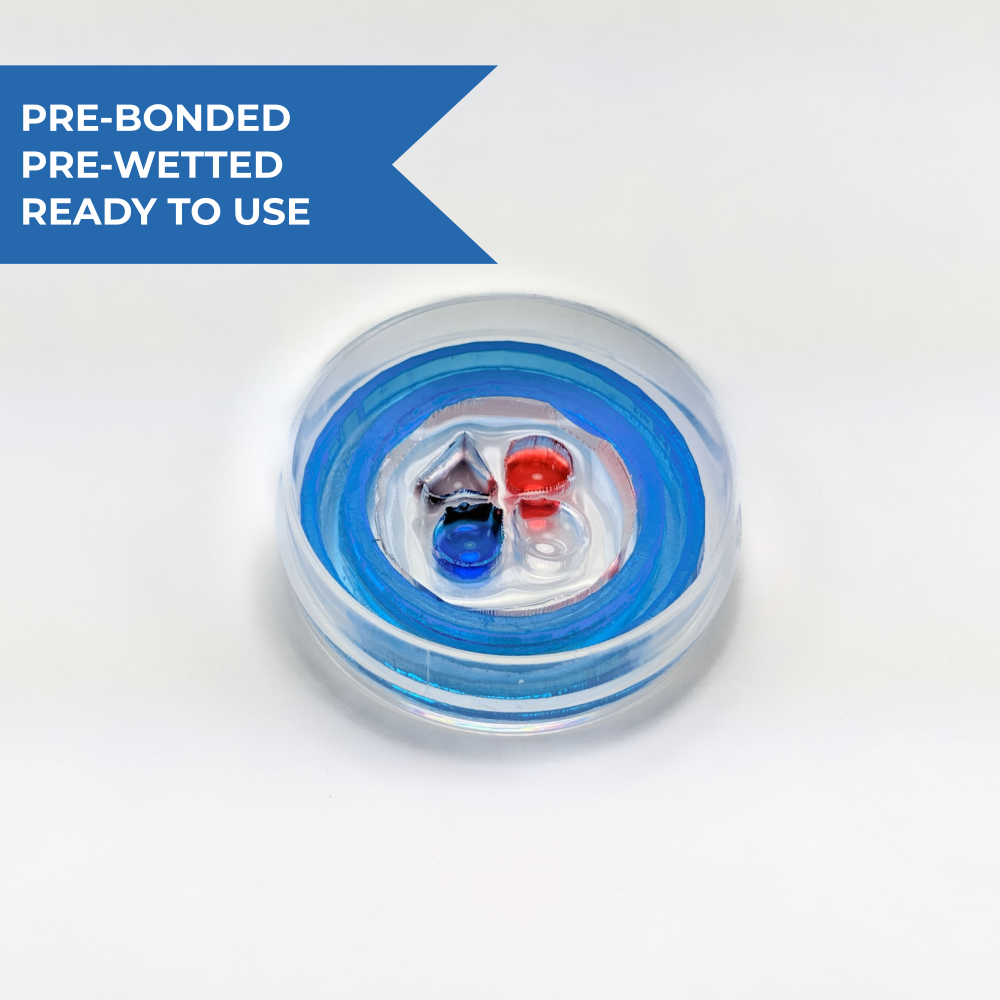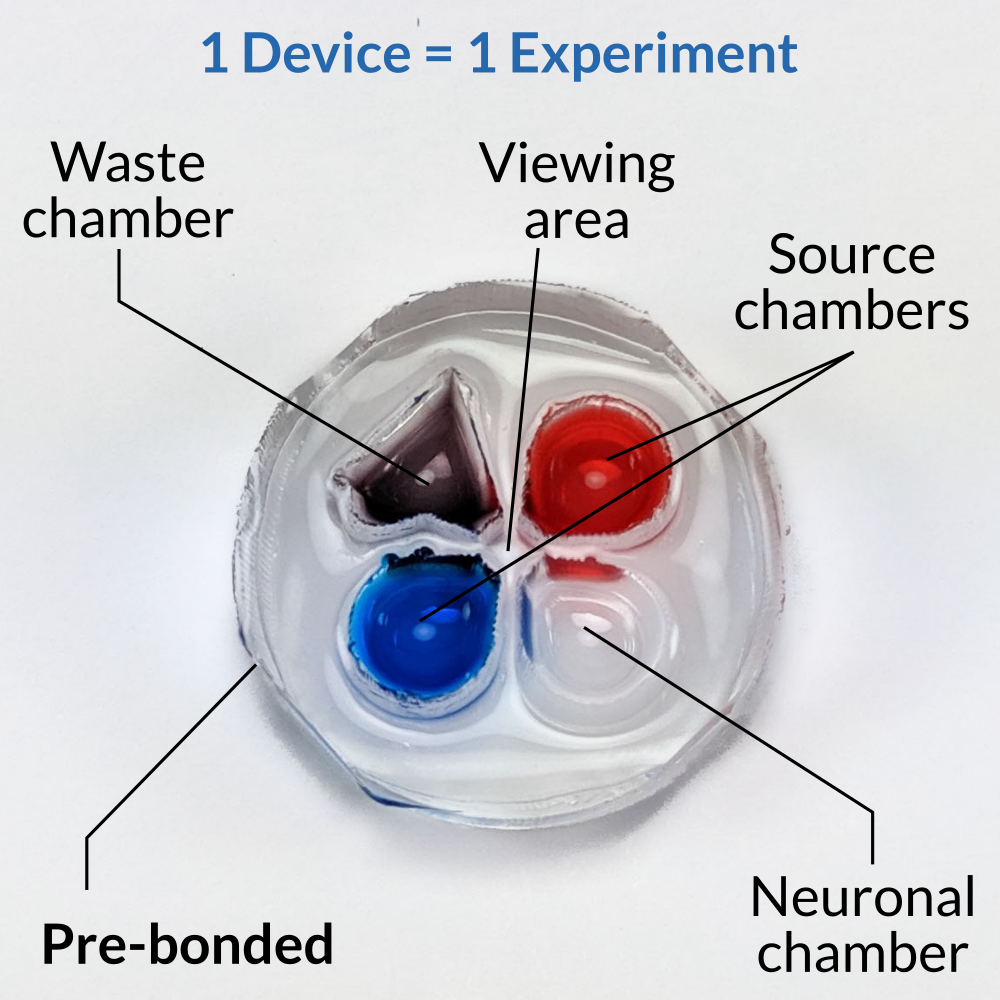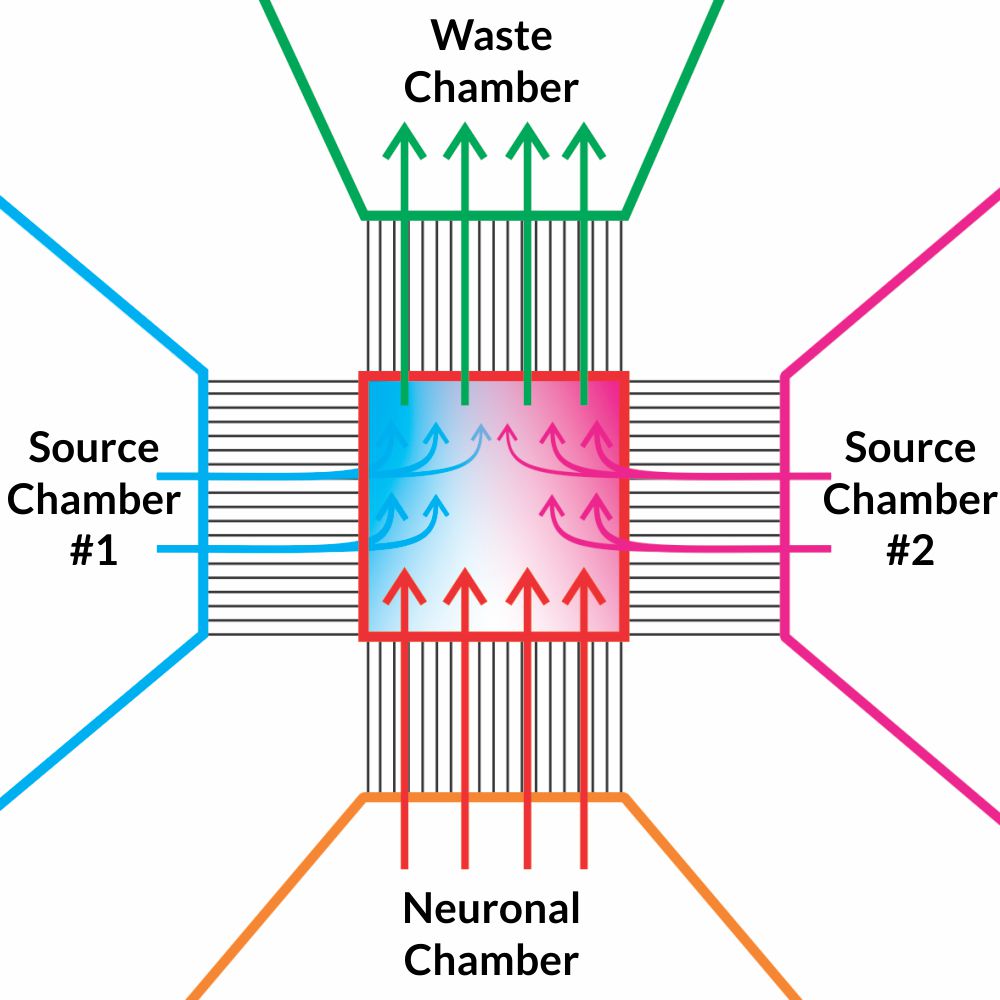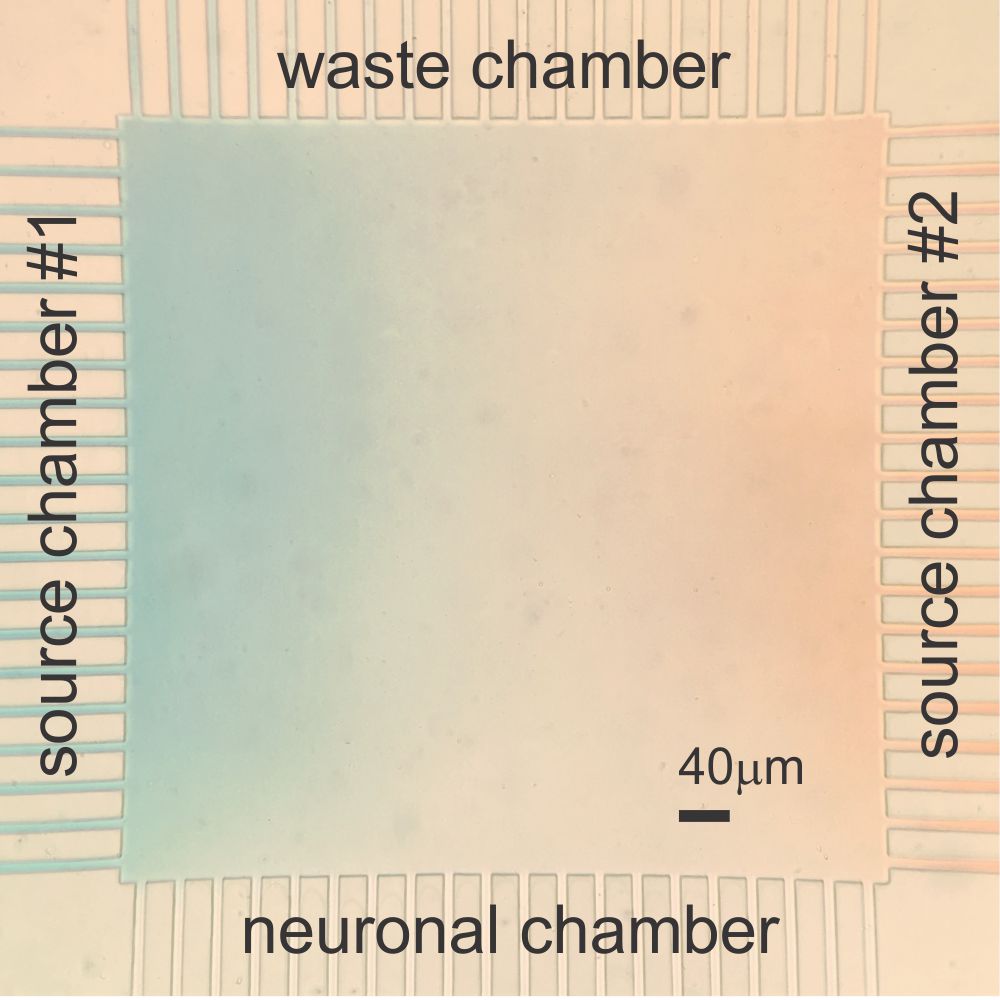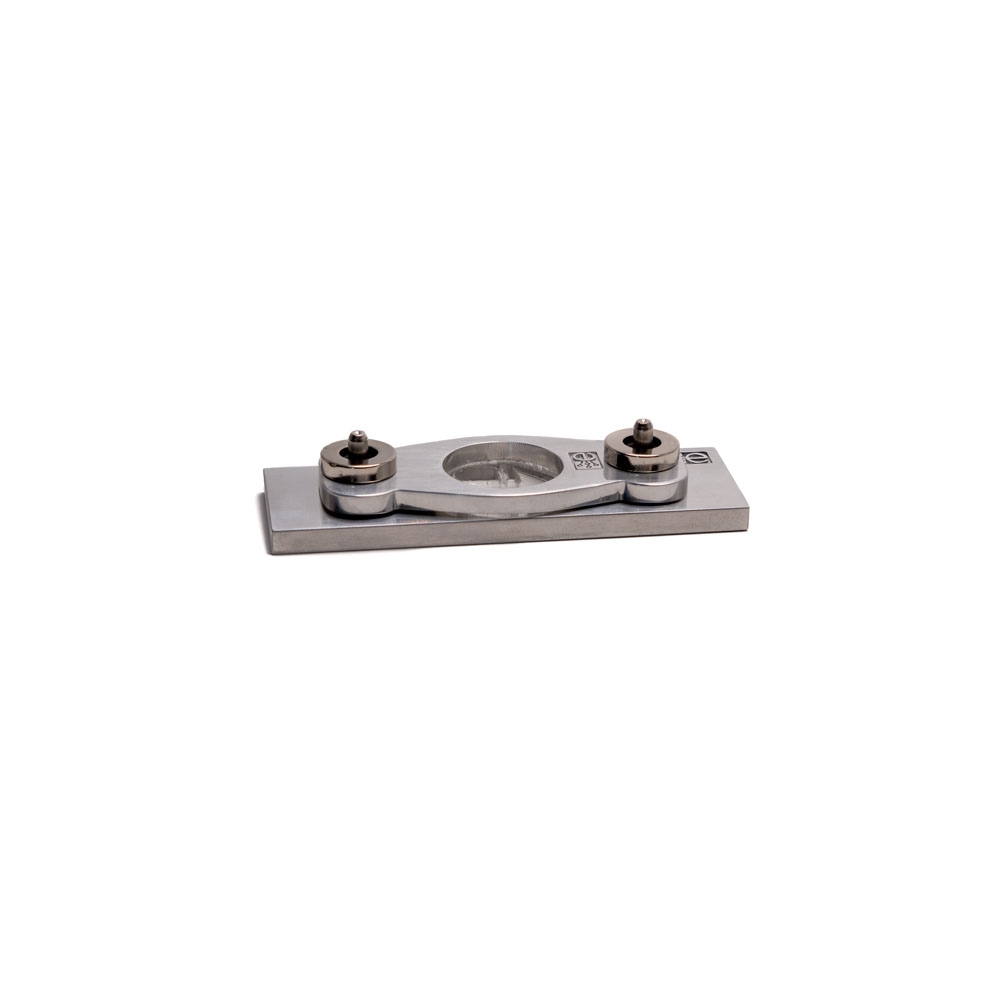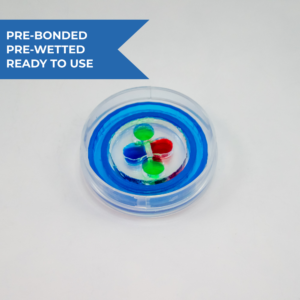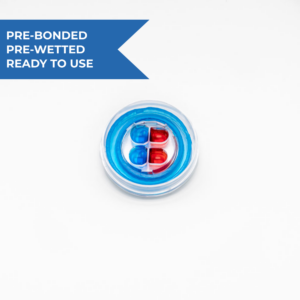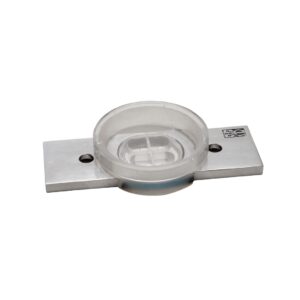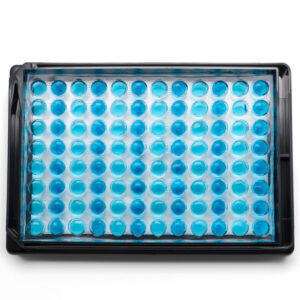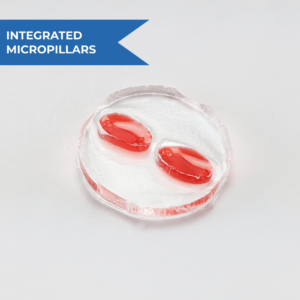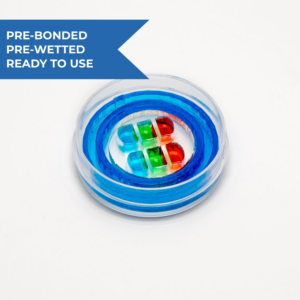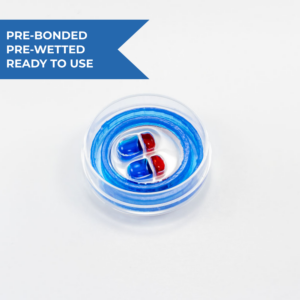OMEGAAG
Axon Guidance and Chemotaxis Device
(3 experiments)
USD$395.00 – USD$450.00
The OMEGAAG device has been designed to help researchers study axon guidance and chemotactic factors in vitro. The device has 4 chambers that are each connected to a central viewing area via a series of microchannels. The flow of fluid across the microchannels can be controlled by simply adjusting the relative fluid volumes in each of the chambers. This asymmetric volume loading of the chambers can serve to fluidically isolate adjacent chambers (like for our OMEGA4 devices), but can also be used to control the direction of flow into and out from the viewing area. Consequently, the viewing area can be a mixing chamber where molecules (or cultures) of interest that have been added to the source chambers will produce a long-lasting and uniform chemical gradient across the viewing area (see photo – blue and red chambers).
In this way, the OMEGAAG is well suited to perform axon guidance experiments such as growth cone turning assays. Neurons that have been seeded in the neuronal chamber (see photo – transparent chamber) will project axons through the microchannels into the viewing area where they are exposed to a gradient of chemotactic factors. The growth cones can then be simply monitored for turning behavior. During these experiments, it may be necessary to isolate the neuronal chamber (somatic components) from the viewing area, to prevent the somatic components from being exposed to the chemotactic factors. This is achieved by maintaining a relatively higher volume of fluid in the neuronal chamber, and by reducing the volume of fluid in the waste chamber (see photo – purple chamber). Doing so promotes the overall flow of fluid from the viewing chamber towards the waste chamber, and not into the neuronal chamber.
As with all OMEGA series devices, the OMEGAAG has open tops, giving researchers the ability to use explants or self-assembled 3D cultures (e.g. spheroids, organoids) in addition to primary or iPSC-derived neurons in their experiments. This means that even the source chambers can be used for culturing cells or tissues – allowing scientists to get creative with new types of growth cone turning assays that might involve explanted tissue, for example. The devices come ready to use in culture – they are sterile, hydrophilic and pre-bonded to #1.5 glass coverslips.
Download the USER GUIDE here!
Learn more about the TOP ADVANTAGES and APPLICATIONS of the OMEGAAG series.


